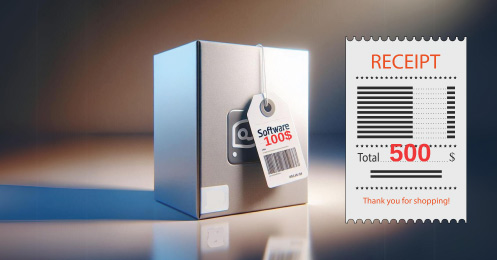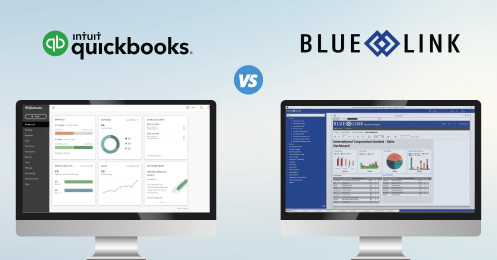This blog is for informational purposes only and should not be construed as legal advice.
Please note that filing for a WEE (Waivers, Exceptions, and Exemptions) and Common Exception Handling are two distinct processes. Our goal is to help you understand both.
Navigating the complexities of pharmaceutical distribution is no small feat, especially with regulatory requirements like the Drug Supply Chain Security Act (DSCSA) which has a deadline for November 27th, 2024. As an HDA member and sponsor, Blue Link ERP attended the Annual Healthcare Distribution Alliance (HDA) Traceability Seminar, in August 2024 where filing WEE’s (waiver, exemptions and exceptions) and exception handling were major topics of discussion.
What is EPCIS in Pharma?
Before we get into WEE’s and Exception Handling, we must first understand EPCIS.
EPCIS (Electronic Product Code Information Services) is the industry approved global GS1 standard that enables trading partners to share information about the physical movement and status of products as they travel through the supply chain. In the pharmaceutical industry, EPCIS helps ensure DSCSA compliance by providing a secure, electronic way to trace drugs at the product level.
As a service provider to the pharmaceutical distribution industry, Blue Link ERP has worked closely with customers and industry partners to ensure that all companies using Blue Link ERP are DSCSA compliant well ahead of the November 2024 deadline. We have also thoroughly tested the connections and movement of EPCIS files.
What are WEE's (Waivers, Exemptions and Exceptions)?
Although all Blue Link customers are ready to go, it is likely that a distributor's trading partner (manufacturer, repackager or dispenser) is not. They may not have their systems and processes secured for the deadline or may be having issues with a particular NDC number (such as print errors). In order to continue to deliver pharmaceutical healthcare products to the patients who need them, the FDA allows businesses to submit a WEE dependent on the issue they face.
A WEE is submitted by a business when they cannot comply with section 319 of the Public Health Service Act or section 582 of the FD&C Act. As per the FDA:
Small Dispenser Exemption under the DSCSA
The FDA has exempted dispensers with 25 or fewer full-time licensed pharmacists from certain requirements under the Drug Supply Chain Security Act (DSCSA) until November 27, 2026. These small dispensers are not required to take any additional actions beyond notifying their trading partners about their exempt status. Under this exemption, they do not need to receive product identifiers in transaction information (TI) and may continue receiving lot-level data. They are also not required to meet the three packages or 10% verification requirement, nor do they need to trace products at the package level. However, all other current requirements under the DSCSA remain in effect.
Guidance for Other Trading Partners
Other trading partners who anticipate not being ready to comply with DSCSA requirements were advised to submit a waiver or exemption request by August 1, 2024. The FDA has indicated that it cannot guarantee a decision by the November 27, 2024 deadline for requests submitted after this date. If a trading partner has not received a response from the FDA before the deadline, their obligations are not paused or extended.
Requests should outline the specific DSCSA requirements for which relief is sought, actions taken so far, reasons for needing more time, assurances that the request will not increase the burden on downstream trading partners, and measures to maintain supply chain security. Most submissions should be made through the CDER NextGen Portal.
Common Exception Handling Scenarios
As iterated above, the ultimate goal of the DSCSA is to improve interoperable tracking of pharmaceutical products at the individual item level. However, exception handling can cause delays in product delivery to the end consumer. To ensure patients across the U.S. have timely access to their prescriptions, exceptions must be resolved promptly.
Update October 21, 2024: Last week, the FDA introduced a narrowly defined, product-specific exemption to DSCSA requirements, allowing trading partners to avoid quarantining products missing serialized data under certain conditions. Waivers and Exemptions Beyond the Stabilization Period | FDA Blue Link ERP simplifies compliance with this exemption by enabling users to adjust EPCIS settings, ensuring efficient management of inbound and outbound data where applicable.
Below, we discuss common exception scenarios.
- Explicit Overage
- Explicit Shortage
- Lot Number Discrepancy
- Concealed Overage
- Concealed Shortage
- Incorrect Buyer "Sold To" Data
- Incorrect Product Data
- Data Not Received
- Damaged Shipment
The below suggested resolutions for the common exception scenarios is summarized directly from GS1 standards guide.
Explicit Overage
Issue: More product received than documented.
Resolution:
- Buyer places the extra product into quarantine.
- Notify the seller of the overage.
- Seller issues an incremental EPCIS file with accurate information.
- Buyer can either accept the inventory or arrange for a return shipping label.
Explicit Shortage
Issue: Less product received than documented.
Resolution:
- Identify which cases to receive into inventory using the EPCIS file.
- Notify the seller of the shortage.
- Seller locates the missing case and ships it within 24 hours, updating the EPCIS file.
- If the seller cannot locate the missing case, they must reimburse the buyer.
Lot Number Discrepancy
Issue: Lot numbers do not match between received product and EPCIS file.
Resolution:
- Notify the seller of the discrepancy.
- Seller issues a VoidShipping event and corrects the EPCIS data.
- Buyer processes a Receiving event for internal reconciliation.
Concealed Overage
Issue: Extra product discovered after opening a case. This could happen months after receiving cases of product.
Resolution:
- Quarantine the extra item.
- Notify the seller and request updated EPCIS information.
Concealed Shortage
Issue: Fewer items discovered after opening a case.
Resolution:
- Notify the seller of the shortage.
- Seller issues a VoidShipping event and a new Shipping event for the missing item.
- Seller ships the missing item along with a new EPCIS file.
Incorrect Buyer "Sold to" Data
Issue: Incorrect buyer information in the EPCIS file.
Resolution:
- Seller issues a VoidShipping event for the entire shipment.
- Seller issues a new Shipping event with the correct buyer information.
Incorrect Product Data
Issue: Correct physical product but incorrect product information in EPCIS.
Resolution:
- Seller issues a VoidShipping event for the entire shipment
- Issue a corrected shipping event with accurate product information.
Data Not Received
Issue: EPCIS file is missing.
Resolution:
- Quarantine the product and notify the seller.
- Seller issues a new shipping event and the missing EPCIS data.
Damaged Shipment
Issue: Shipment arrives damaged.
Resolution:
- Quarantine the damaged goods and notify the seller.
- Seller issues a VoidShipping event and a new EPCIS file.
- Separate dispositions for good and damaged cases complete the DSCSA data feed.
As per GS1 standards:
“The Optional VoidShipping event explains that there was an error and removes the missing item from the DSCSA data feed.”
Best Practices for Handling Exceptions
- Digital Communication: Use EPCIS files, email, spreadsheets, or website portals to communicate exceptions. Avoid using fax, verbal communication, scanned PDFs, or photocopies.
- Do Not Resend Partially Accepted Files: If only part of the original file was accepted, do not resend the entire file. The new file will be rejected if any part of the original file was accepted.
- Pre-Delivery Checks: If discrepancies are identified before the delivery truck leaves, the buyer can refuse delivery of the shipment.
Potential Challenges and Limitations of EPCIS in Exception Handling
While EPCIS offers numerous advantages for exception handling in pharmaceutical distribution, there are also challenges and limitations that must be considered. One of the primary challenges is the integration of EPCIS with existing systems, as many distributors may be using outdated infrastructure that is not compatible with new standards. Additionally, the initial implementation of EPCIS can require significant time and resource investment, which may deter smaller distributors from adopting the technology.
Another limitation is the reliance on accurate and timely data entry. Ensuring that all stakeholders in the supply chain maintain consistent data quality is crucial; however, human error or miscommunication can lead to discrepancies that complicate exception handling. Lastly, training staff to effectively use EPCIS and interpret its data adds to the operational challenge, especially in an industry with constantly evolving regulations. Addressing these challenges is essential to fully leveraging the benefits EPCIS can bring to pharmaceutical distribution.
Effective exception handling using EPCIS is crucial for maintaining compliance with DSCSA requirements and ensuring the smooth operation of pharmaceutical supply chains. By understanding the common lot-level exceptions and their resolutions, pharmaceutical distributors can take proactive steps to manage discrepancies and maintain seamless operations while ensuring that patients receive safe and effective medications
FAQ: DSCSA Compliance and Exemptions
The following FAQ includes questions raised by trading partners during the traceability seminar. Please note that the answers provided are not formally approved by the FDA, so exercise caution when relying on this information.
- If my trading partner files for an exemption, what do I need to do?
As a distributor, if your trading partner (such as a pharmacy) files for an exemption or informs you that they fall under the automatic exemption due to their low employee count, you are not required to send them EPCIS files since they will not be able to accept them. However, the product still needs to be tracked, so you must continue to send T3 information as it is. - What should I do if my partner does not have a GLN?
If your partner does not have a GLN (global location number) you will not be able to generate an EPCIS file. Your best bet is to speak directly with your partners and offer them the resources available to get a GLN from GS1 as soon as possible. Global Location Number - GS1US Ecommerce - What happens if a manufacturer is not compliant, and a distributor has to file for an exemption?
Certain National Drug Codes (NDCs) may be exempt or waived if a manufacturer is not compliant, and a distributor needs to file for an exemption. The duration of these exemptions or waivers is not specified, and the FDA has not yet clarified whether the list of exempted NDCs will be publicly posted. - What if an NDC is exempted and then returned after the exemption period?
If an NDC is initially exempted and later returned after the exemption period ends, compliance obligations will apply. The distributor should ensure that all necessary tracking and reporting requirements are resumed in accordance with DSCSA regulations.











